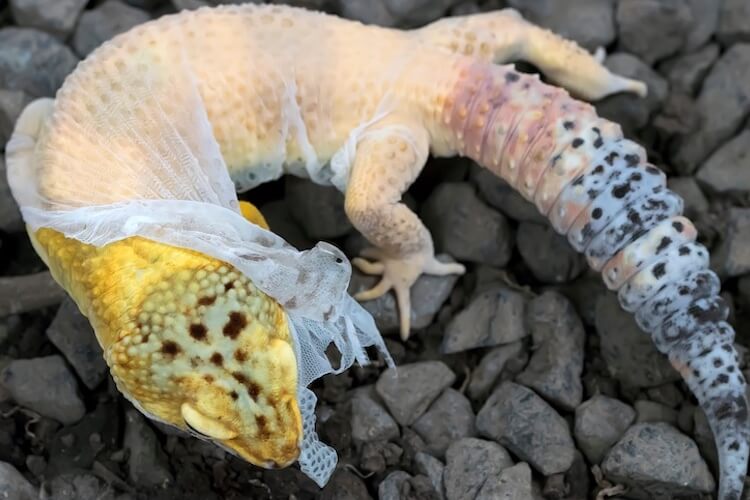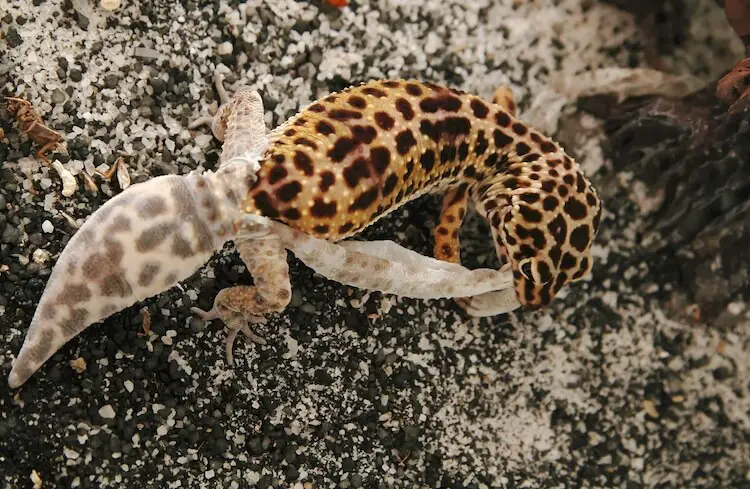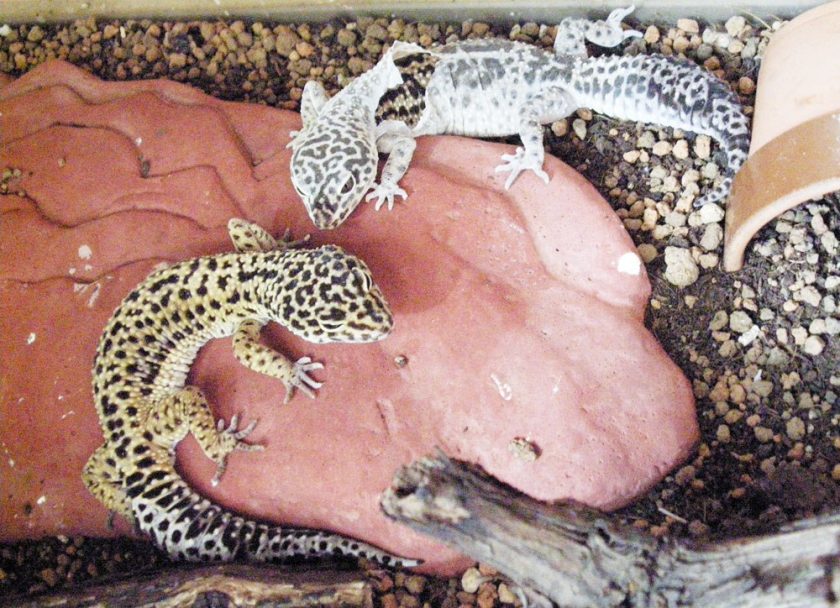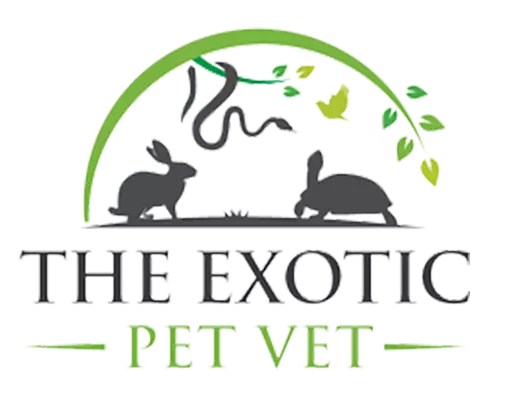Leopard geckos are a common species of lizards. They are mainly found within the rocky desert areas of South Asia. Leopard geckos are known to be domestic.
Therefore, they are considered common pets. Their diet mainly consists of insects and some smaller reptiles.
It’s a weird scene to see your pet gecko eating its own skin. And for sure, you have the question: why do leopard geckos eat their skin? However, it is normal for leopard geckos to eat their own shed skin.
As a new Leopard gecko owner, you shouldn’t be worried. It can be surprising to see your pet gecko to shed skin at first. It might look gross, but it’s pretty natural for them.
Leopard geckos shed their skins to create new ones, and this is normal for lizards.
Keep on reading to find out what these lizards eat their own skin.
The Eating Habits of A Leopard Gecko
It is important to understand leopard geckos will eat. Leopard geckos eat variety of food. But mainly crickets and mealworms are leopard gecko’s best meal.
Although waxworms and superworms should be treats. Since they are rich in fat. Crickets are found in stores very often. That’s why it is a common meal for Leopard geckos.
Also leopard geckos must be fed with live food only. Any dead or dried insects should be avoided. Juvenile leopard gecko must eat every day.
Whereas, adult leopard eat every other day. Leopard geckos can be picky eaters. So they might stop eating even during their feeding time.
Why Do Leopard Gecko Shed?

Leopard geckos mainly shed their skin to grew a tougher outer layer of skin. This skin is a protective layer in the future from dangers. To start shedding , they rub themselves with hard surfaces.
Usually, the skin around the head starts flaking first. Their body produces a fluid between the outer and inner layer of the skin. The fluid makes the shedding process simpler. It helps the outer layer peel off the gecko’s body easily.
Sometimes, they will use their mouth to remove skin from tricky spot. When the shedding ends, the new skin will have a brighter and healthy skin. So make sure their habitant has a rough surface for them to rub against and ensure it goes smoothly.
How Often Does a Leopard Gecko Shed?
It depend on their shedding frequency. Different growth rate has different frequencies. Usually young geckos grow quickly, so they shed their skin often. The shedding occurs every 2 to 4 weeks. It helps them with their rapid growth.
When it comes to adult geckos, their growth is slowed down. So , they don’t really shed often. The shedding process takes 4 to 8 week or less for average adult gecko.
Young leopard geckos tend to shed more often. Whereas the older geckos shed less. Environment can be a huge factor for the shedding process.
Make sure the enclosure is comfortable for the gecko, has the right temperature and proper diet. Stress can affect the shedding process too. If a gecko gets stressed or ill , it may have difficulty shedding correctly.
A healthy leopard gecko will shed its skin all at once. However, if you find skin patches on them, the shedding wasn’t smooth.
Why Do Leopard Geckos Eat Their Skin After Shedding?

It can be surprising at first to notice that your leopard gecko’s body skin peels away. But it’s perfectly normal and nothing to worry about. Their older skin will become small snack to them.
Some nutrients are present in their old skin. During the shedding leopard gecko’s energy is lost. So they eat their dead skin to replenish themselves. It also helps them make new layer of skin.
In the wild, predators hunt for leopard geckos through their dead skin. Consuming their shed skin is the best way to cover their traces. Besides, leopard geckos like to clean the environment. So, eating their skin is the best way to remove it.
How Can I Help My Leopard Gecko Shed?
Geckos may shed completely without any problems, most of the time. Unlike other reptiles, geckos don’t have problem removing their skin. It is important to help your gecko to shed.
As it maintains its well-being. Although its best to let it happen naturally. But you can help them make few changes on the habitat.
Increasing the humidity of enclosure will help the gecko with the process, as they need moisturizer . Watch your gecko’s closely when they are shedding.
If there’s a skin not fully peeled, you can help it to shed completely. Since stuck skin can cause many problems for your gecko. Besides, simply rubbing there with wet cloth can help pulling the dead skin off.
However, forcefully pulling the skin can hurt your leopard gecko. Hidden places on habitat can make your gecko feel safe during the shedding.
Also, a good diet can help your gecko with their shedding process. It takes several days for the shedding process to complete. So be patient and your gecko will usually shed its own skin.
Substrate for Shedding

During the set up of the enclosure. It’s important to choose a habitat’s substrate. The humidity of the habitat will keep up due to the substrate.
This will help your gecko to shed it’s skin. A reptile carpet can be used to keep a perfect habitat and can be easily cleaned. However, it cant hold moisture. So humidity should be maintained by other ways.
Moss can help with shedding as it absorbs water and increase humidity. Another good substrate to increase the humidity is coconut fiber. Although, it is not recommended for young geckos.
As, they might mistake it for food. You can try to create a mixtures of substrates that can provide moisture and texture.
Why Is My Leopard Gecko Not Shedding?
Leopard gecko not shading? Don’t worry. If your gecko isn’t shedding check for the humidity. Usually if the humidity is too low , the skin wont loosen up. Which will cause problem during shedding.
Another reason could be dehydration, which can cause the skin to get dry. So, make sure your gecko is drinking fresh water.
If your gecko is stressing much , it will affect the shedding cycle. Stress can happen if there is any change on the environment or temperature. A balanced diet is extremely necessary for a smooth shedding process.
Conclusion
Shedding is a natural process. But you can help them with the right environment, temperature , substrate and proper lightning for your gecko to shed comfortably. Hope this article was informative for you to take care of you leopard gecko.
Frequently Asked Question
Are leopard geckos supposed to eat their skin?
Yes, it is pretty normal for a leopard gecko to eat his skin almost every time they shed. When they shed , they loose nutrients. So eating their skin will help them get them back.
Do lizards eat their old skin?
Yes, lizards eat their old skin as soon as it is shed.
Is it bad to peel gecko skin?
A healthy Leo will shed their skin naturally, however they may get stuck shedding , in that case you can help them. However, don’t try to forcefully peel it off.



